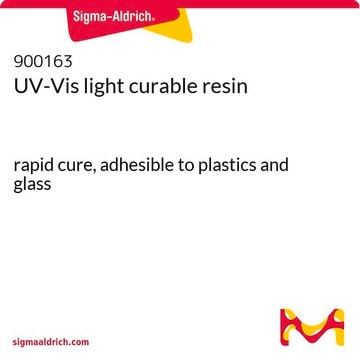Wichtige Dokumente
915556
HNMB
≥98%
Synonym(e):
4-[(E)-[(2-hydroxy-1-naphthalenyl)methylene]amino]-3-methyl benzoic acid, Aggregation-induced emmision (AIE) materials, Mechanochromic luminescent (MCL) materials
Größe auswählen
Größe auswählen
About This Item
Empfohlene Produkte
Qualitätsniveau
Assay
≥98%
Form
solid
Farbe
white
mp (Schmelzpunkt)
292.9 °C
UV-Absorption
λ: 317 nm Amax
λ: 443 nm Amax
SMILES String
N(=C\c2c3c(ccc2O)cccc3)/c1c(cc(cc1)C(=O)O)C
InChI
1S/C19H15NO3/c1-12-10-14(19(22)23)6-8-17(12)20-11-16-15-5-3-2-4-13(15)7-9-18(16)21/h2-11,21H,1H3,(H,22,23)/b20-11+
InChIKey
HCGGUBXKKWXERU-RGVLZGJSSA-N
Verwandte Kategorien
Anwendung
In biology, pressure could direct the folding-unfolding of protein molecules, guide blood stream and even control the cell migration. The complexity with these cases makes the monitor and measurement of pressure from conventional force sensor based on classical mechanics impractical. Based on mechanical sensitive materials with ingenious design at the molecular level, a new way to detect pressure is developed. And mechanochromic luminescent (MCL) materials have formed a vital part of such materials. They are intentionally endowed with the ability to change luminescence property (e.g., emission wavelength, emission intensity and lifetime) under mechanical force, which can be readily detected by naked eyes or instruments. As molecule-based sensors, they are compatible to various flexible substrates and arbitrarily curvilinear surfaces, facilitating many applications.
Lagerklassenschlüssel
11 - Combustible Solids
WGK
WGK 3
Flammpunkt (°F)
Not applicable
Flammpunkt (°C)
Not applicable
Hier finden Sie alle aktuellen Versionen:
Analysenzertifikate (COA)
It looks like we've run into a problem, but you can still download Certificates of Analysis from our Dokumente section.
Wenn Sie Hilfe benötigen, wenden Sie sich bitte an Kundensupport
Besitzen Sie dieses Produkt bereits?
In der Dokumentenbibliothek finden Sie die Dokumentation zu den Produkten, die Sie kürzlich erworben haben.
Active Filters
Unser Team von Wissenschaftlern verfügt über Erfahrung in allen Forschungsbereichen einschließlich Life Science, Materialwissenschaften, chemischer Synthese, Chromatographie, Analytik und vielen mehr..
Setzen Sie sich mit dem technischen Dienst in Verbindung.






